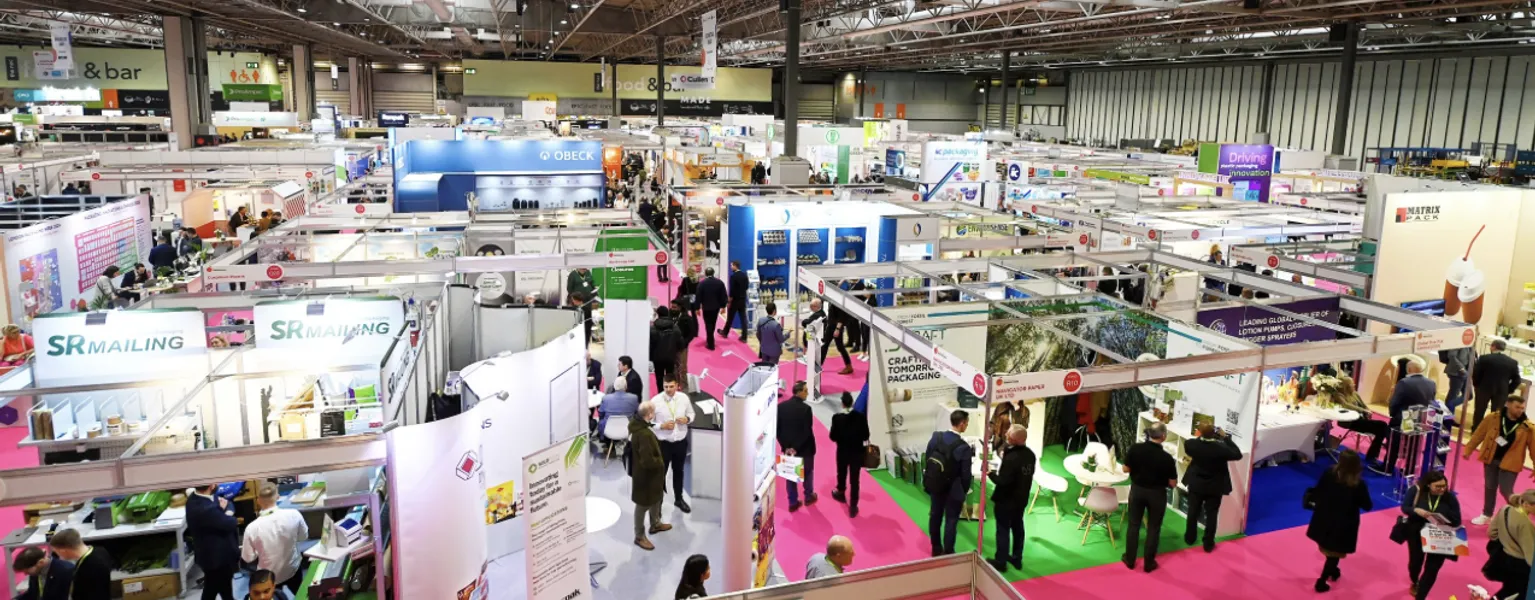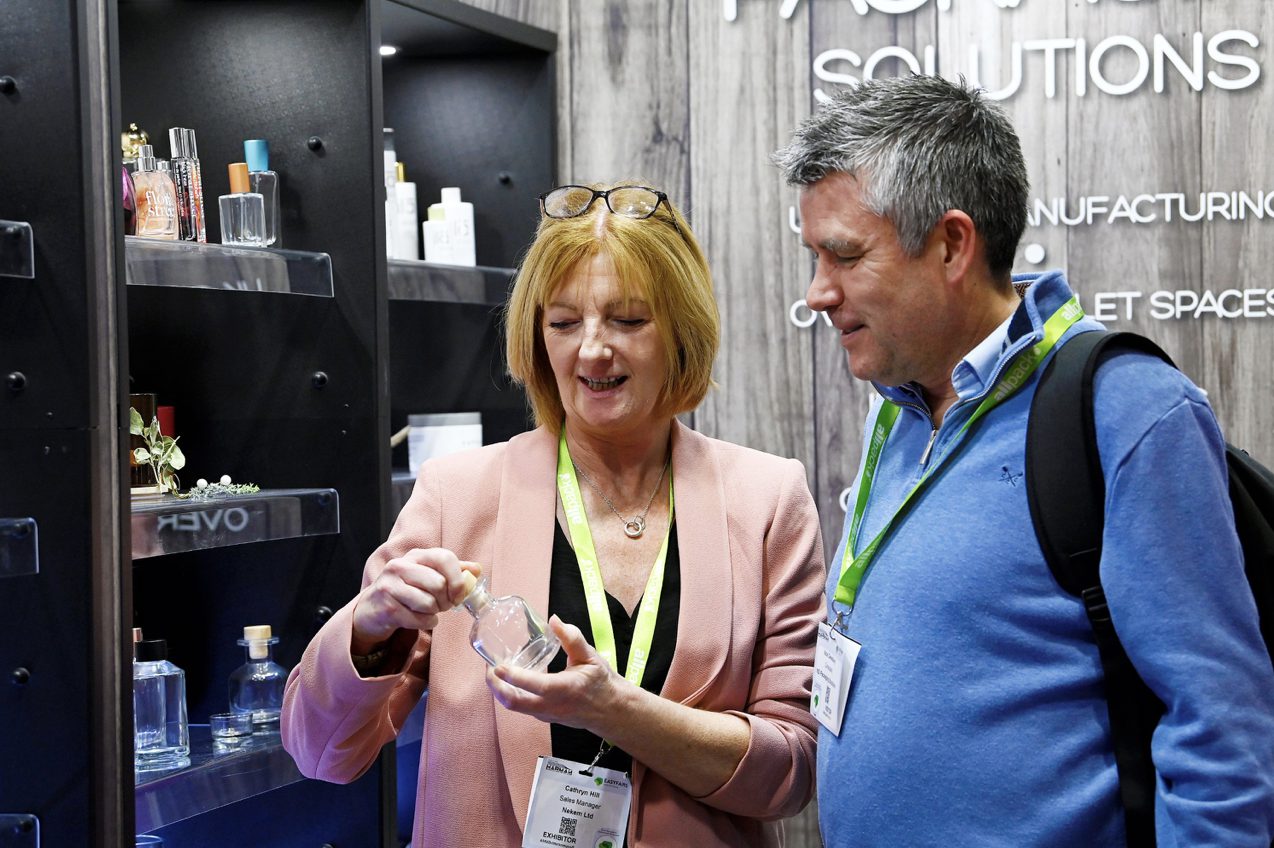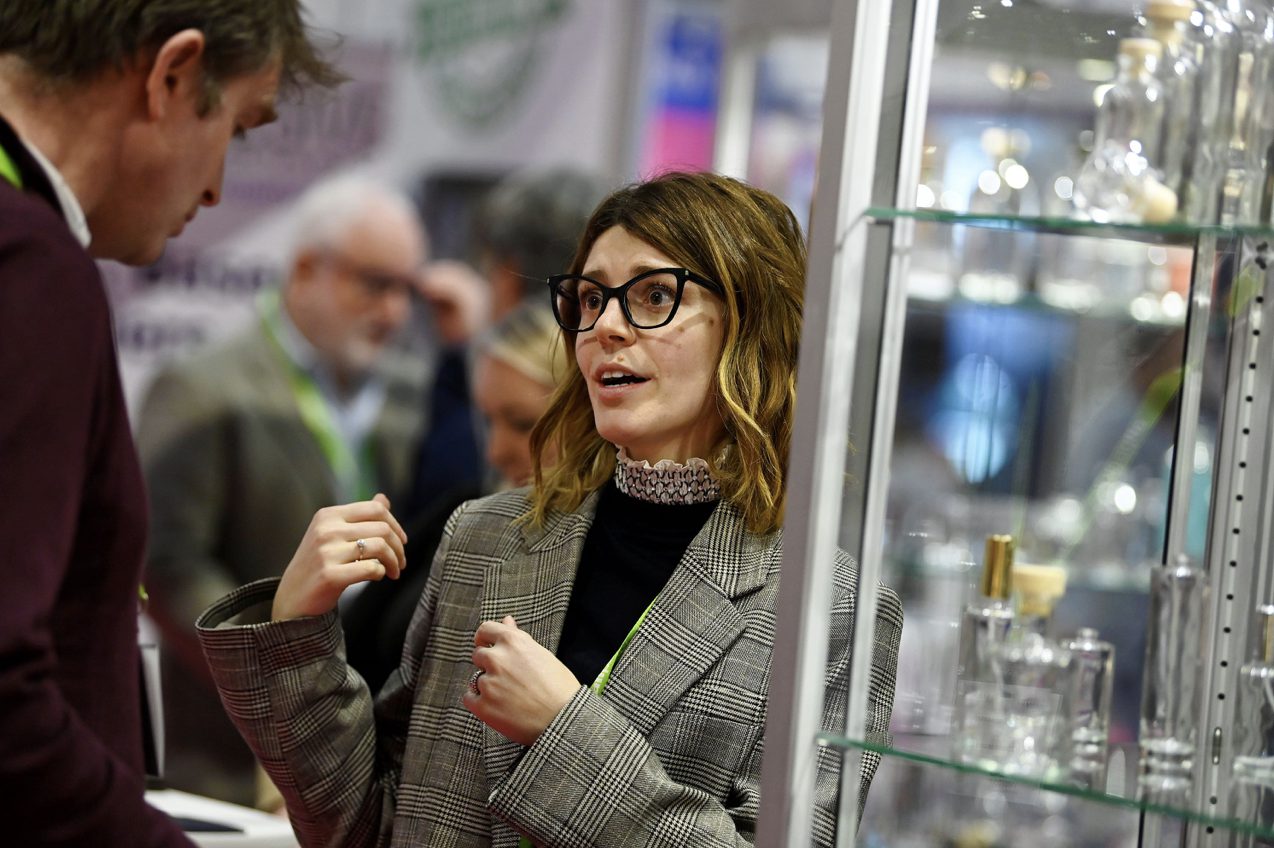Shaping sustainable beauty at Packaging Innovations & Empack 2025

Events
Sussex-born Victoria Brownlie MBE, Chief of Policy & Sustainability at the British Beauty Council, is spearheading efforts to revolutionise the beauty industry’s approach to sustainable packaging.
The shift toward sustainable packaging in the beauty industry marks a pivotal moment, requiring not only technical innovation but also an unprecedented level of industry-wide collaboration. Initiatives across the sector are encouraging companies to adopt shared practices that prioritise innovation and reduce resource waste. By collectively setting new benchmarks, brands are working toward packaging solutions that meet strict sustainability standards without sacrificing accessibility or affordability, an essential balance for an industry historically dependent on plastic.
Packaging Innovations & Empack 2025 is a timely platform for underscoring the importance of aligning business practices with the growing demand for environmentally responsible products. Leaders are expected to highlight how sustainable packaging is not just an ethical imperative but also a competitive advantage in today’s market, where consumer expectations around environmental consciousness are higher than ever. By meeting these expectations, companies can stay ahead while also advancing broader industry standards.
At the upcoming Packaging Innovations event in February, Victoria Brownlie from the British Beauty Council will explore how the beauty industry is embracing a shift towards sustainable packaging solutions. She will highlight the sector’s advancements in using sustainable materials and adopting refillable and reusable packaging, while also calling for strengthened collaboration across brands and suppliers to meet growing consumer expectations for sustainability. Brownlie’s insights aim to inspire a united commitment, encouraging both industry players and consumers to actively participate in shaping a more environmentally responsible future for beauty.
“The event itself isn’t focused solely on the beauty industry, but the beauty industry is a massive contributor to packaging waste,” she told Packaging Innovations. “We’re the fourth largest contributor of plastic packaging waste. Annually, we produce 120 billion units, so we play a significant role in moving toward a more sustainable model, particularly when it comes to packaging innovation. I hope people will take away an understanding that the industry is taking this issue seriously and making strides toward transitioning to more environmentally conscious packaging and practices. If we don’t make this shift, we will face significant challenges—not only as an industry but also for consumers and the world at large.”

The current challenges
With 95% of cosmetic packaging discarded after use, the beauty industry faces one of its most pressing sustainability challenges. Often, the packaging is more substantial than its product, contributing to significant waste and environmental impact. The issue is compounded by low recycling rates—only 14% of beauty packaging reaches recycling plants, with a mere 9% processed and the rest sent to landfills, where decomposing can take centuries. This reality has heightened calls for the industry to explore innovative packaging alternatives beyond single-use plastic.
“The biggest issue is the sheer size and scale of the problem,” Brownlie continued. “Innovation is happening and developing rapidly, with so much interesting work around sustainable packaging. However, most of our packaging is currently plastic, which is highly adaptable, malleable, and, most importantly, inexpensive. While there’s widespread consensus now that plastic cannot continue to play such a significant role in our future, affordable alternatives aren’t fully available yet. We need a way to scale up these alternatives to make them cost-competitive with plastic. This will require collaboration within the industry—brands joining forces to invest in innovation and potentially purchasing materials together jointly. Without this, it will be difficult to compete with plastic, which remains the cheaper, easier option that brands will continue to rely on.”
The allure of beautifully designed packaging now goes hand in hand with sustainability, as brands face mounting pressure to make sustainability a core part of the consumer experience. Driven by goals like the UK Plastics Pact's 100% recyclability target for 2025, brands are challenged to merge aesthetics with environmental responsibility, shifting packaging standards to prioritise impact over traditional design. According to Brownlie, embracing sustainability allows brands to meet changing consumer expectations and lead by example, encouraging choices that reduce waste and support a healthier plant.
“Legislation is coming, whether it’s the Extended Producer Responsibility regulation in the UK, EU regulations, or others in countries like the US” she added. “Even if individual businesses aren’t motivated on their own, the regulatory side will create a mandatory need or impose significant costs for not transitioning. From a consumer standpoint, research shows that around 80% of customers want brands to help reduce their carbon footprint. Businesses can choose their motivation for change, whether personal ethos, regulatory requirements, financial implications, or consumer demand. Ultimately, however, they need to make these changes.”

Consumer expectations and regulatory pressures
Established brands face the challenges of merging the sustainability with broad market reach and loyal consumers. In a competitive sector, packaging often drives appeal, sometimes even more than the products themselves. As environmental concerns grow, brands' strategies must balance sustainable options with consumer expectations for aesthetics and functionality.
“I completely understand that it’s very challenging—especially if you’re a well-established brand or a large, multi-brand organisation which owns numerous brands and has a loyal client base built on how their formulations currently perform and how their products are presented,” said Brownlie. “The beauty industry is dense and highly competitive. You might see 20 creams on a shelf with almost identical ingredient compositions, but what sells is the packaging and marketing. So, I completely understand how difficult this environment is for these brands.
“And then there are brands genuinely motivated to make this change, like those pursuing B Corp certification. Even they struggle. They’ve committed to the idea of “planet-positive beauty” and aim for B Corp status to prove that commitment. Yet, they encounter serious challenges with packaging due to the ingredient composition issues. Take active ingredients like those within retinols and retinoids, which are currently popular at the moment. These vitamin A-based ingredients have proven benefits which are increasingly understood and desired by consumers. However, they must be preserved under very particular conditions to maintain efficacy, so the packaging must meet stringent criteria.
“Generally, with beauty product packaging, the products must be effective in all conditions—whether in the Antarctic or the Sahara, at any time, and in any environment. Packaging is crucial in ensuring that the product’s efficacy isn’t compromised. For items containing active ingredients like vitamin A, switching to mushroom-based or paper-based packaging or even aluminium is not necesdsarily an option at the moment. Those alternatives may not protect the composition of the product adequately, which could lead to it failing to cosmetic regulation and safety standards. We need help to solve the challenge of making these kinds of unstable ingredients retain their full efficacy in packaging that doesn’t include plastic. Right now, brands are struggling to solve this issue, which is why events showcasing packaging innovation are so valuable.”

A call to action for innovation
Victoria Brownlie is set to challenge the packaging sector to rise to the occasion, emphasising the critical moment for innovation in sustainable practices. With the beauty industry under increasing scrutiny for its environmental impact, Brownlie will spotlight the transformative potential of new materials and technologies that can redefine packaging solutions. This call to action encourages industry players to embrace change and collaborate on innovative strategies that align with evolving consumer expectations and regulatory requirements, fostering a more sustainable future for beauty products.
“It’s a ripe opportunity,” she said. “Recently, we’ve seen some fascinating innovations introduced to the industry that have generated a lot of excitement. Some of these innovations are progressing so quickly that current regulatory frameworks can’t even keen up. Now, some advanced materials can utilise existing machinery previously used to produce plastic packaging for new, non-plastic alternatives. This means that companies don’t need to invest in new machinery to make the transition, offering significant cost savings. These innovators are seizing the opportunity to discover new and sustainable materials that have the potential to transform the industry. Many, many brands are still looking for solutions in this space, making it an incredibly exciting time to be a packaging innovator.”
Individuals rely on beauty and personal care products daily, typically using between five and ten items before leaving their homes each morning. Unlike in other sectors where consumers have the option to forego certain products, personal care is a fundamental part of daily life, encompassing essentials like soap, toothpaste and skincare.
Due to this reliance on beauty and personal care products, Brownlie asserts that the industry has a critical obligation to champion sustainable change.
“Our industry also faces a big challenge with single-use sachets and travel-sized items,” she added. “There’s some impressive work being done to create sachets from new materials rather than disposable plastic or plastic-aluminium film. This is especially important because sachets provide samples and trial sizes for consumers, often crucial for introducing new products. We need to find ways for these sachets to have no environmental impact—or, ideally, even a positive one.
“In this area, some brands have developed sachets made from waste products of the ingredients they already use. For instance, one brand has started creating sachets from the waste product of borage—a key ingredient in its product range. Previously, the borage waste would have been discarded, but now it’s being repurposed into sustainable packaging. This type of innovation is inspiring because it represents true circularity, utilising what would otherwise be waste and transforming it into something beneficial. This circular approach is exactly what we need to see more of in the industry.”
Packaging is complex and nuanced, requiring tailored strategies across product categories, from luxury to every day, to drive sustainable progress. Key to this is the Sustainable Beauty Coalition, a forum that unites beauty industry stakeholders and promotes collaboration. The Council envisions a future where sustainable choices are accessible and standard, empowering brands and consumers to support a healthier planet. In response to the need for effective solutions, the upcoming Great British Beauty Cleanup campaign will encourage consumers to return and recycle their used products.
“We’re supporting this effort with a major campaign in 2025 called the Great British Beauty Cleanup,” said Brownlie. “This initiative, involving retailers and brands, will help direct consumers to where they can return and recycle packaging – highlighting industry and retail takeback schemes across the country. Right now, curbside recycling only accepts basic beauty products like standard lotions or hand washes, so more specialised items aren’t usually included.
“This project is for the short term, accepting that returning empties to brands for reuse or recycling can be a bridge solution. But ultimately, recycling alone doesn’t create true circularity. True sustainability will require investment in innovative alternatives and ultimately a phasing out of industry’s reliance on plastic.
“Long-term solutions will come through innovation and evolving regulations aligned with global climate goals, such as those outlined in the Paris Agreement and COP initiatives. As more stringent regulations emerge, the "carrot and stick" approach will shift, with fewer incentives and more penalties for non-compliance. By making these transitions early, brands that act now can gain a competitive advantage. However, I appreciate that this is not easy and it is challenging for brands to have to rethink all their packaging, move away from plastic and adopt truly sustainable materials and ultimately points to a need for long-term investment in sustainability."
Looking ahead, the industry’s commitment to developing solutions that meet sustainability standards and embrace a regenerative mindset is more critical than ever. As stakeholders gather at Packaging Innovations & Empack 2025, the opportunity to forge partnerships and drive collective action will be pivotal in shaping a more sustainable future for beauty. By working together and sharing resources, the industry can set new packaging benchmarks that prioritise environmental responsibility and consumer needs, paving the way for lasting change.
Related News
-
Events
Countdown to Packaging Innovations & Empack 2025 begins
-
Events
Register now for Packaging Innovations & Empack 2025
-
Events
Discover the future of innovation and design at Paris Packaging Week 2025
-
Events
London Packaging Week 2024 sets new attendance record
-
Events
Packaging Innovations & Empack 2024: Record-breaking success




